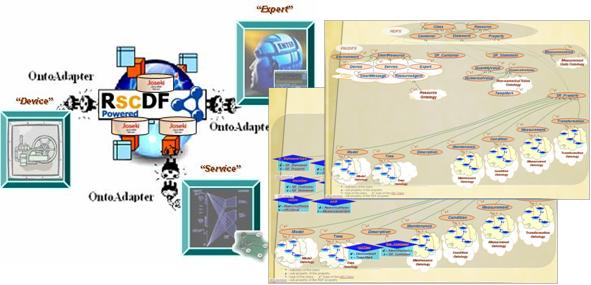|
Deliverable 1.1
Resource State/Condition Description Framework: A Dynamic and Context Sensitive Metadata Description Framework

We cannot say yet that Semantic Web technology as such is mature enough to be accepted by industry in a large scale.
Some of standards still need modifications as well as appropriate tool support. For example, Semantic Web technology
offers a Resource Description Framework (RDF) as a standard for semantic annotation of Web resources. It is expected
that Web content with RDF-based metadata layer and ontological basis for it will be enough to enable interoperable
and automated processing of Web data by various applications. However emerging industrial applications consider e.g.
machines, processes, personnel, services for condition monitoring, remote diagnostics and maintenance, etc. to be
specific classes of Web resources and thus a subject for semantic annotation. Such resources are naturally dynamic,
not only from the point of view of changing values for some attributes (state of resource) but also from the point
of view of changing "status-labels" (condition of the resource). Current RDF still needs temporal and contextual
extensions.
This motivates one of the objectives of SmartResource project activities during the Adaptation Stage (year 2004),
which is Resource State/Condition Description Framework (RSCDF), as an extension to RDF, which introduces upper-ontology
(semantic standardized data model) for describing such characteristics of resources as states and corresponding conditions,
dynamics of state changes, target conditions and historical data about previous states. These descriptions are supposed
to be used by external Web-services (e.g. condition monitoring, remote diagnostics and predictive maintenance of the
resources). Pilot version of RSCDF and appropriate schema were developed using the freeware open source Prot‚g‚ tool.
RSCDF is an RDF-compliant semantic representation format for resource's historical (life-cycle) data.
RSCDF inherits from RDF an approach of modeling a problem domain using triplet entities and building inter-related
hierarchies of classes and properties. This approach endows the resulting data models with high extensibility and
originally aims at providing a semantically rich descriptive data (metadata) about a corresponding resource to
new-generation (intelligent) software processing tools.
|
|
|

